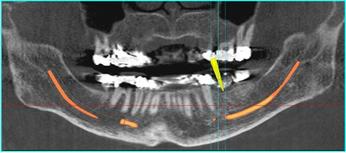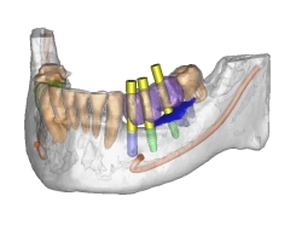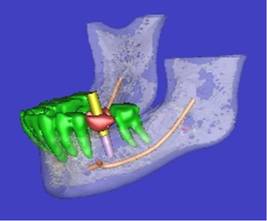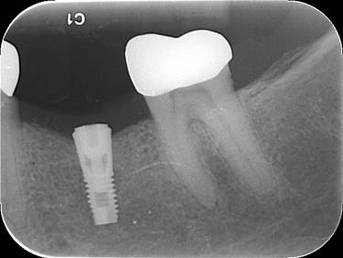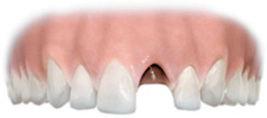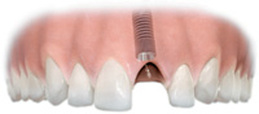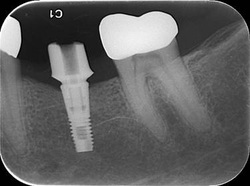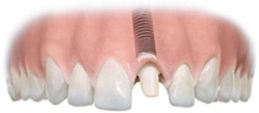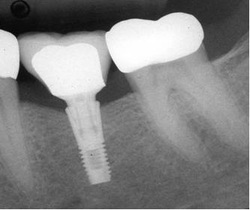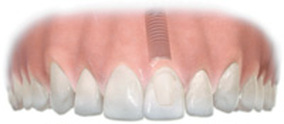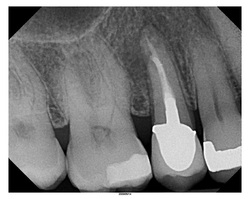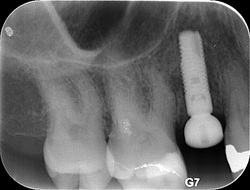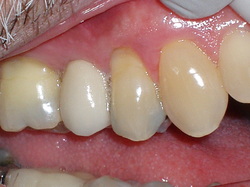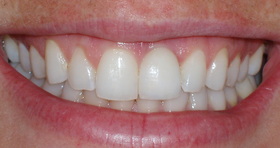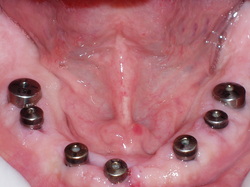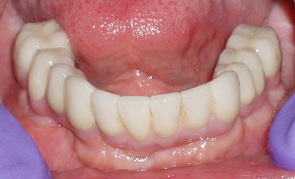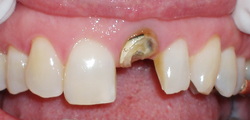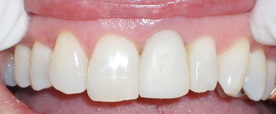Dental Implants
Did you know?

Tooth loss causes you to experience
• Decreased chewing ability
• Permanent loss of jawbone, affecting your looks
• Instability of your remaining teeth
Dental implants are your long-term solution for replacing one or more missing teeth – at any age.
• Decreased chewing ability
• Permanent loss of jawbone, affecting your looks
• Instability of your remaining teeth
Dental implants are your long-term solution for replacing one or more missing teeth – at any age.
Six reasons you should consider implants instead of other solutions

1. They look, feel and function like your natural teeth
2. Healthy teeth do not need to be ground down to support the dental implants
3. Anchoring dental implants in the jawbone stimulates bone tissue and gums, ensuring an attractive, esthetic result while helping to maintain facial structures
4. Dental implants do not require any adhesives to hold the new teeth in place
5. They eliminate the discomfort and insecurity of loose, ill-fitting dentures
6. You have a secure, permanent tooth replacement
2. Healthy teeth do not need to be ground down to support the dental implants
3. Anchoring dental implants in the jawbone stimulates bone tissue and gums, ensuring an attractive, esthetic result while helping to maintain facial structures
4. Dental implants do not require any adhesives to hold the new teeth in place
5. They eliminate the discomfort and insecurity of loose, ill-fitting dentures
6. You have a secure, permanent tooth replacement
The Implant Process

People continue to be curious about dental implants. Patients with missing teeth are pleasantly surprised at how much implants are like real teeth. Dental implants look, feel, and function like your own natural teeth. With implants, you can eat, smile, and speak naturally again. All these benefits improve peoples' lives significantly.
The implant process is effective and it is safe. The system we use has evolved over 25 years of documented research. Implant systems may vary. But for the right candidate, all systems offer better function than removable dentures.
The implant process is effective and it is safe. The system we use has evolved over 25 years of documented research. Implant systems may vary. But for the right candidate, all systems offer better function than removable dentures.
Diagnostics
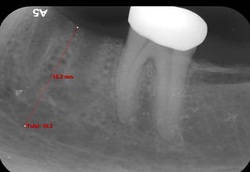
In order to gain information about surrounding teeth, bone and nerves, diagnostics are collected to ensure ideal implant placement. Tomographic or 3D images are taken to begin the planning process of your implants.
Conversion of your Tomographic Images and Implant Planning

Using Simplant technology Dr. Ford will plan your implants in a virtual surgery. The plan will be reviewed with you and your restorative dentist to ensure an optimal esthetic and function outcome. From this diagnostic information a surgical guide will be fabricated for your procedure.
The Benefits of SurgiGuide: Predictability, Safety and
Esthetic results
Watch the movie below to learn more about SurgiGuides
Scientific studies show that a three-dimensional plan, in combination with the use of a SurgiGuide®, will lead to an increased success rate for obtaining good natural esthetic results. This will be assured because the restorative plan was taken into consideration during implant planning. Complete information about the quality and quantity of the bone makes it possible for Dr. Ford to determine the ideal location for your dental implants. This will increase the probability for a successful operation. Knowledge of the exact location of important anatomy, such as the mandibular nerve and the maxillary sinus cavities, provide confidence that implant placement will proceed smoothly and safely. SurgiGuide® helps ensure that implants are properly placed, using all of this valuable information.
SurgiGuides
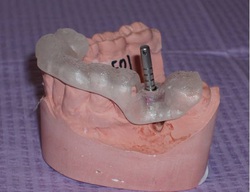
The Surgical guide used during implant placement will help Dr. Ford to place your implants in the proper location, angulation, and depth avoiding nerves, the maxillary and nasal sinuses, and roots of other teeth.
Implant Uncovery
After a two to six months healing period, posts or healing abutments are attached to each implant.
Final Implant Crown Placement
Lastly, your general dentist makes new teeth just for your face and mouth. These teeth are secured to the posts(healing abutments). Your new teeth look just like your real teeth, as only the "tooth part" is visible. To be a good implant candidate, you need the bony ridges in your jaw to be in good shape and for your gum tissue to be healthy.
Please call our office for an appointment or additional information. We will be happy to answer any questions you have regarding dental implants.
Please call our office for an appointment or additional information. We will be happy to answer any questions you have regarding dental implants.

